Transcranial Magnetic Stimulation (TMS) Therapy is a revolutionary approach to mental health treatment. It involves using magnetic fields to stimulate nerve cells in the brain. As Dr. Clayton L. Allison, a renowned psychiatrist explains, “TMS Therapy is an innovative treatment that can make a significant difference for patients where traditional methods haven’t been successful.”
Determining Your Suitability for TMS Therapy
The journey to TMS begins with evaluating your suitability. “Assessing candidacy for TMS involves understanding a patient’s mental health history and current condition in detail,” says Dr. Allison. This process ensures that TMS is a safe and effective option for you.
The Initial Consultation: What to Expect
Your initial consultation is crucial. You will meet with a mental health professional who will outline the TMS process. Brittany Huckaby, a psychiatric nurse practitioner, emphasizes, “The initial consultation is not just about educating the patient about TMS, but also about understanding their unique needs and concerns.”
Preparing for Your First TMS Session
Preparation for TMS is straightforward but important. “Patients should come to their sessions well-rested, comfortably dressed, and have had a light meal,” advises Huckaby. These simple steps ensure you are at your best for the session.
Experiencing a TMS Session: A Detailed Walkthrough
During a TMS session, you’ll be seated in a comfortable chair, and a magnetic coil will be positioned near your head. “Patients often report a tapping sensation during the session, which is completely normal,” Dr. Allison notes. Each session typically lasts around 30-40 minutes, during which the magnetic fields are painlessly and non-invasively applied.
Monitoring Progress and Adjusting Treatment
Throughout your TMS journey, your progress will be closely monitored. “Adjustments to the treatment protocol are sometimes necessary to maximize its effectiveness,” says Dr. Allison. These adjustments are based on your response to the therapy.
Understanding Potential Side Effects and How to Manage Them
TMS is generally well-tolerated, but it’s not without potential side effects. “Common side effects like scalp discomfort or mild headaches are typically short-lived and manageable,” Huckaby assures. Your healthcare provider will guide you on how to best manage any discomfort.
Concluding the TMS Therapy: Next Steps and Follow-up
As you approach the end of your TMS treatment, your healthcare team will discuss your progress and any further steps. “The conclusion of TMS therapy is just the beginning of a new chapter in a patient’s mental health journey,” Huckaby reflects. Follow-up care is essential to maintain the benefits gained from the treatment.
Frequently Asked Questions About TMS Therapy
Transcranial Magnetic Stimulation (TMS) therapy is a non-invasive treatment method used for depression and certain other psychiatric conditions. Here are some frequently asked questions about TMS therapy:
What is TMS Therapy?
TMS therapy uses magnetic fields to stimulate nerve cells in the brain. It’s typically used when other depression treatments haven’t been effective.
How Does TMS Therapy Work?
It involves delivering repetitive magnetic pulses, which are thought to activate regions of the brain that have decreased activity in depression.
Who is Eligible for TMS Therapy?
TMS is mainly used for individuals with major depressive disorder, especially those who haven’t responded to antidepressants or psychotherapy.
Is TMS Therapy Safe?
Yes, it is generally safe. The most common side effects are scalp discomfort and headache during treatment. Seizures and mania are rare but possible side effects.
How Long Does a TMS Treatment Take?
A typical session lasts about 30-60 minutes and is usually done 5 days a week for 4-6 weeks.
Is TMS Therapy Effective?
Many studies show that TMS can effectively reduce symptoms of depression, especially in treatment-resistant cases.
Can TMS Therapy Replace Medications?
It’s often used when medications aren’t effective, but it’s not typically used as a first-line treatment. Some patients might still need medication alongside TMS.
Is TMS Therapy Covered by Insurance?
Coverage varies by location and insurance provider. In many cases, it’s covered for treatment-resistant depression.
Can TMS Therapy be Repeated?
Yes, if symptoms of depression reappear, TMS therapy can be repeated.
Are There Different Types of TMS?
Yes, there are variations like Deep TMS (dTMS) and repetitive TMS (rTMS), which differ in the magnetic field’s intensity and how deep it penetrates the brain.
Is There Any Downtime After TMS Sessions?
No, there’s typically no downtime. Patients can usually return to their normal activities immediately after a session.
Who Should Not Receive TMS Therapy?
It’s not recommended for individuals with metal implants in their heads or those with seizure disorders.
TMS therapy is a promising treatment for depression, especially for individuals who have not found relief through traditional methods. Always consult with a healthcare provider for personalized advice and treatment options.
For residents in Allen, McKinney, Frisco, and Dallas, Texas, seeking expert care in TMS Therapy, NorTex Psychiatry is here to guide you. With a team led by experts like Dr. Clayton L. Allison and Brittany Huckaby, PHNP, you’re in knowledgeable hands. Reach out to begin your journey toward better mental health. Remember, your well-being is our priority.







